Adeptus Titanicus – Mechanicum Cerastus Knight Atrapos
A second type of Mechanicum Knights can be found among the Cerastus Class, the Cerastus Knight Atrapos. Adding not only a new option for the Mechanicum in Adeptus Titanicus next to the Questoris Styrix and Magaera, but adding a fourth class of Cerastus after the Lancer, Acheron and Castigator.
As you can see from the box, this is a Forge World release and this comes with a few differences compared the "regular" Adeptus Titanicus range. Major point is, that these are only available directly through Forge World, so you have to order them either at Forge World directly or at a Games Workshop events (and at Warhammer World). With Games Workshop and Forge World still adapting to the current situation, it may take a while for these kits to be delivered and they may be out of stock from time to time. But Forge World is customer orientated, so shipping towards Europe is 12 EUR flat and free if you order for more than 90 EUR, and a really convenient service is that their orders are shipped DDP (delivery duty paid, so you don't have to pay customs or service charges). At a price of 50 EUR for the pair of Cerastus Knight Atrapos you're already half way there for free shipping. Another difference with these compared to other kits from the Adeptus Titanicus range, the Atrapos are cast from resin and not injection mould plastic or finecast. But more on that further below.
The Atrapos are a more recent addition to the lore of Warhammer 40,000, introduced with the 28mm model in 2015. The rules were available as a free download from the Forge World website and not tied to a specific book of the Horus Heresy. Similar to the Mechanicum Questoris knights, the Cerastus Knight Atrapos is a unique and rare variant among the Knight Households. They were originally developed to take on heretek engines and xenos warmachines, as those were considered a blasphemy to the Omnissiah, but their rare and potent weaponry made them a devastating threat against not only Knights but Titans well, on both sides of the Horus Heresy. Armed with Atrapos lascutters and Graviton Singularity Cannons, mounted on the swift Cerastus chassis the Atrapos is a rather destructive choice, especially further upgraded with the Macro-Extinction Protocols, Blessed Autosimulacra and Ionic Flare Shield.
The Adeptus Titanicus kit is a perfect scaled down variant of the large Forge World model, and realised as a full resin kit, not as an upgrade for the other Cerastus plastic kits. The pair of Cerastus Knight Atrapos costs 50 EUR.
Forge World products are often sold in white card board boxes, as you might know them from some of the Mail Order products. In this case they have a plastic clamshell container, that contains all the resin parts, the assembly instructions, a flyer with information on handling resin and the command terminal. The designed boxes are kept for the more exclusive parts of their range, for example the Horus Heresy character series or "full scale" (well, 28mm scaled) warmachines like the titans.
All the cards and flyers are added in the boxed set, but only the flyer is folded due to it being oversized for the package. If you are a new to handling resin models, this is very helpful information, especially as the Adeptus Titanicus range has a more accessible pricing to new players and the dominant part of the range is plastic, a large portion of the customers might not yet be familiar with the handling of resin miniatures (yet). The flyer even has a signed part, where an employee from the Quality Assurance signs (or stamps) that he or she has checked the parts.
Games Workshop re-arranged the way they sold the command terminals, and added these directly to the kits instead of being sold separately. Therefore, the Forge World kits cover the rules / command terminals as well, and you don't need to buy these individually. They are not the thick cardboard ones anymore from the first releases, but a stronger paper / thin cardboard now. Still sturdy enough for gameplay.
The pair of knights come with an assembly instruction. Read these in detail, as some parts look nearly identical, but aren't - for example the lower legs are slightly different angled. The instructions are clear and easy to follow. The biggest challenge would be the cleaning of the mould flash and some casting aids.
Forge World miniatures are hand-made in small batches. Therefore availability, especially with the current situation, may vary, and casting quality may differ from batch to batch. I received a first kit of these in January, but they had unfortunately some casting errors (the resin did not fully fill out some of the parts), but Forge World replaced them after I sent some pictures to their customer service. The replacement arrived in Germany about 2-3 weeks later, but UPS took about 4 months to get them from their warehouse to me. Thus, causing the delay in this review. The replaced kit was without bigger problems.
As for resin casts, instead of an injection mould as you have with (hard) plastic, these are usually produced with a (two-part) rubber mould, that the epoxy resin is casted into and then settles inside a pressure chamber. After the epoxy resin is cured, the pieces are taken from the rubber mould. As a two-piece mould, and the inviscid attributes of resin, you don't have the classic mould lines you have from injection plastic, but often thin flash or resin skin, that needs to be cleaned. As the resin has to be poured into the mould and air has to escape the mould, the parts have connection pieces / casting aids, that need to be removed. Usually this can be easily done with a pair of clippers and then cleaned afterwards with a cutter or file. In some cases, air is trapped within the mould, (not enough resin used, the pressure chamber is not running smoothly or similar errors) causing small air bubbles to occur on some areas of the casted parts. Not an issue on these.
Overall detail is pretty amazing and the quality of the cast is decent too, as there are no air intakes or contamination of the resin itself. On some parts of the armour you can the thin steps from the 3d masters or polygons from the 3d model. In most cases these won't be visible once painted, but sometimes those might require some filing or filling. After cleaning the parts from the casting aids, you have some left overs on your hands (some hobbyists repurpose them in terrain).
A comparison of the resin parts next to their slightly different designed plastic counterparts, to give you an idea of size and detail grade. The casting is on a very close grad of sharpness, but does not come across as sharp due to the lighter grey of the resin. Interesting to see the more mechanicum cog designs all over the armour of the Cerastus chassis.
As the flyer suggests and as I do with most of my resin kits, (Forge World, Bolt Action tanks, so on), give the pie a good wash in hand warm soap water, to remove any detergents from the casting process (this may cause irritation to your primer or paints, just as a heads up). If you come across warped pieces - this might happen with larger resin kits (especially long gun barrels are prone to this) - you can use the warm (or hot) water to bring pieces back in shape. As with Adeptus Titanicus the bits are rather small, I strongly suggest removing the pieces from the casting aids after the wash and not before.
Afterwards, removing any sprues or flash from the pieces. Some have delicate cables and power lines, that have as casting support some "stronger" (we're still speaking thinner as a mm) flash, which needs to be removed. Use a drill or the tip of an xacto knife to clean these.
Before you glue your pieces together, I strongly suggest that you do a dry fit to ensure the fit of joints / connections, or if they need a bit of scraping / aligning. I start the build with the upper body, the carapace to be precise. The heads are added by a pin and can be slightly rotated to the left and right. The carapace and the body might need a bit of scraping along the gluing surface, so make sure it fits before you glue it.
You already have built half the knight by now, so it is time to cover the legs. Again, check if the lower legs align properly / that you didn't swap left or right, as this might result in a wobbly stand of the knight. By removing the pin, you could give it a more dynamic pose. But as the ankles are in a fixed position, this might require additional work to look properly.
The Atrapos pattern is armed with a Atrapos lascutter and Graviton Singularity Cannon, and the weapons fit both arms. The instructions show them Atrapos Lascutter right, and the Graviton Singularity Cannon on the left, but you can swap them left to right, to your liking, as I did to create some variation. They fit a L-shaped upper arm and can only turned/rotated, not really angled. Assembly is very easy, as they are cast as a single part. I prefer those were you can angle the weapon up and down, without moving the whole arm.
As we have all the individual "build groups" we can now assembly the whole Knight. As with the other knights, I recommend leaving the arms off until you have them painted, to have better access to the model itself.
The Atrapos is pretty much the same size as the regular Cerastus Knight pattern, a bit less wide and with rounder shapes, but beyond that same size. And to give you an idea where they rank with the other Knights and Titan, shown with Questoris Knight, Reaver and Warlord Titan.
The mechanicum design is really neat and comes across pretty neat in this scale. I have to say, I would have preferred more difference between the two, and not just a mirrored pose. A more dynamic, striding pose would have been great for the B-model.
Conclusion
Always happy to see an addition of more exotic units for Adeptus Titanicus. Especially the mechanicum. From those Knights units available for the Mechanicum by Forge World in 28mm, we're complete. We miss the Acastus Knight Asterius, as a variant / counterpart of the Porphyrions.
Compared to the casting quality of the smaller Questoris Knights, this is still above average but due to the larger size you can see the render and some of the printing steps on the more open areas of the armour or carapace. Warpage wasn't an issue with this kit, a bit of flash but beyond that crisp and clean details. As for pricing, compared to the Questoris Mechanicum knights, the difference is moderate, as you have 50 EUR for the pair of two, which is 10 EUR more than the Magaera or Styrix, but that's double the price of the plastic Cerastus pattern. So far the Atrapos was mostly shown in the colours of House Malinax, with the novelty of loyal colours with the Adeptus Titanicus product picture of House Vyronii.
Due to the design of the Atrapos it was clear that it wouldn't work as an upgrade and we would see a full resin kit. A fair solution. It is pricy, that is for sure, but as you can get some pretty good deals on the Adeptus Titanicus range itself due to the maniples and knight households, I think it is okay to spend the extra dime on some special units. But at that price you have to deliver proper quality, and I count those miscast in the first delivery as part of the pressure to deliver at all under the tense situation around the turn of the year. Games Workshop / Forge World had an a-class customer service and replaced them without much hassle.
Warhammer 40,000 and Adeptus Titanicus are brands by Games Workshop.
The reviewed product item was provided by the manufacturer.
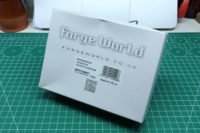
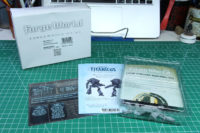
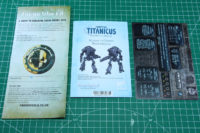
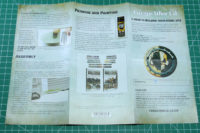
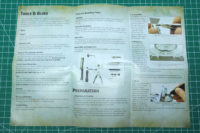
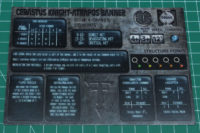
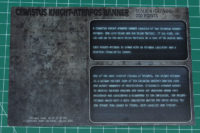
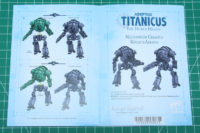
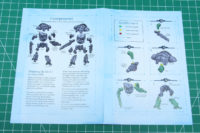
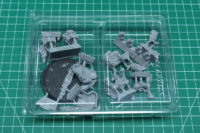
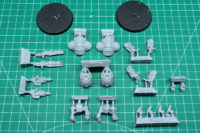
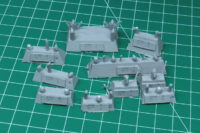
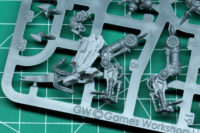
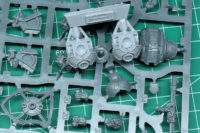
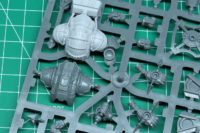
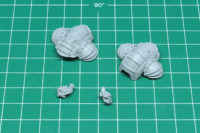
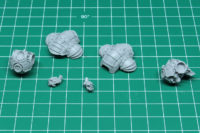
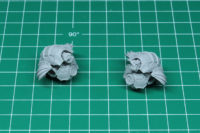
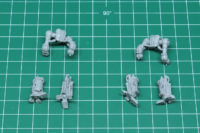
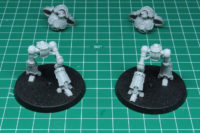
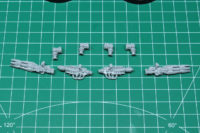

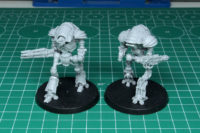
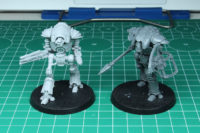
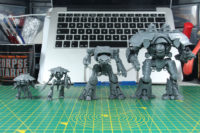

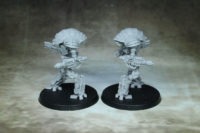
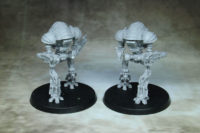












Leave a Reply